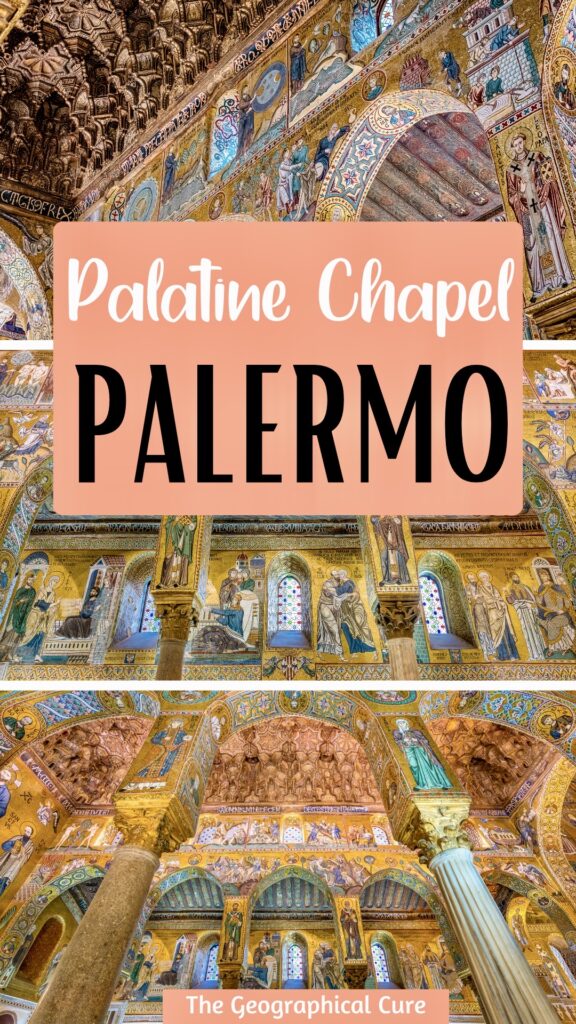The UNESCO-listed Norman Palace, Palazzo dei Normanni, is the top historic attraction in Palermo Sicily.
It houses the Palatine Chapel, an extraordinary space filled with glittering Byzantine style mosaics. French author Guy de Maupassant once described the chapel as “the finest religious jewel dreamed up by the human mind.”
The royal palace was the seat of the kings of Sicily during the Norman occupation. Today, it houses the Sicilian Royal Assembly and is the oldest royal residence in Europe.
In this guide, I tell you everything to see on a visit.
History of the Norman Palace & Palatine Chapel
The venerable Norman Palace dates to the 9th century. Back then, it was principally a defensive military structure. The palace got its current look thanks to King Roger II, the first Norman king of Sicily.
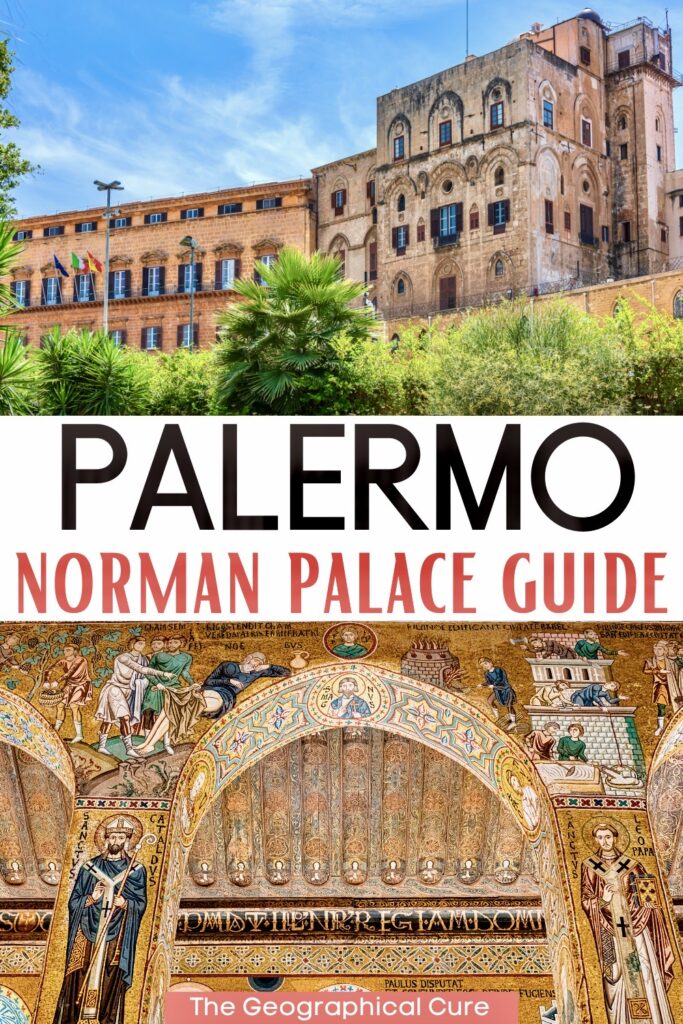
After conquering Sicily in 1072, the Norman kings used the palace as their main residence. To put their stamp on it, they transformed the Arabian palace into a more multifunctional complex with administrative and residential functions.
In 1130, Roger began an extensive Norman makeover. He also wanted his own private chapel onsite. So, he built the famous Cappella Palatina, which became the focal point of the palace.
Roger embraced the cultural and ethnic diversity of Sicily and his palace reflects that. You’ll find almost a hodgepodge of Arab, Norman, and Byzantine elements. In fact, some historians believe that Roger was a secret muslim.
After Roger’s reign, his successors William I and William II continued to expand and redecorate the palace. But, by the mid 13th century, the complex was in decline. The Spanish kings left the palace, decamping to the Palazzo Chiaramonte.
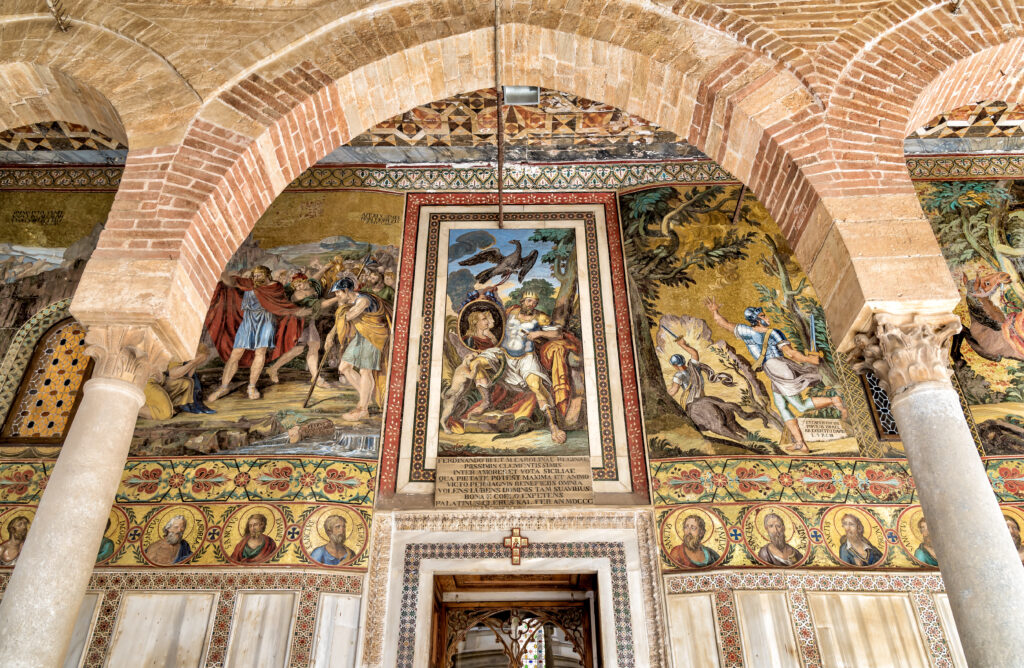
The palace became a type of military garrison where the Spanish held their inquisitions. Fortunately, in 1553, a Spanish viceroy decided to restore the palace to its former glory.
In 1565, another viceroy added Renaissance elements, including the fountain courtyard and a series of apartments. In 1601, a monumental staircase was built to connect the three levels of the courtyard loggia.
Other rulers added further embellishments. A mosaic panel dedicated to the story of King David was added over the door to the Palatine Chapel.
A monumental fresco cycle of the labors of Hercules was added to Sala Grande, the Great Hall of Parliament.
Since 1947, the Norman Palace has been the seat of the Sicilian Regional Assembly. In 2015, the palace and the chapel were placed on the UNESCO World Heritage list.
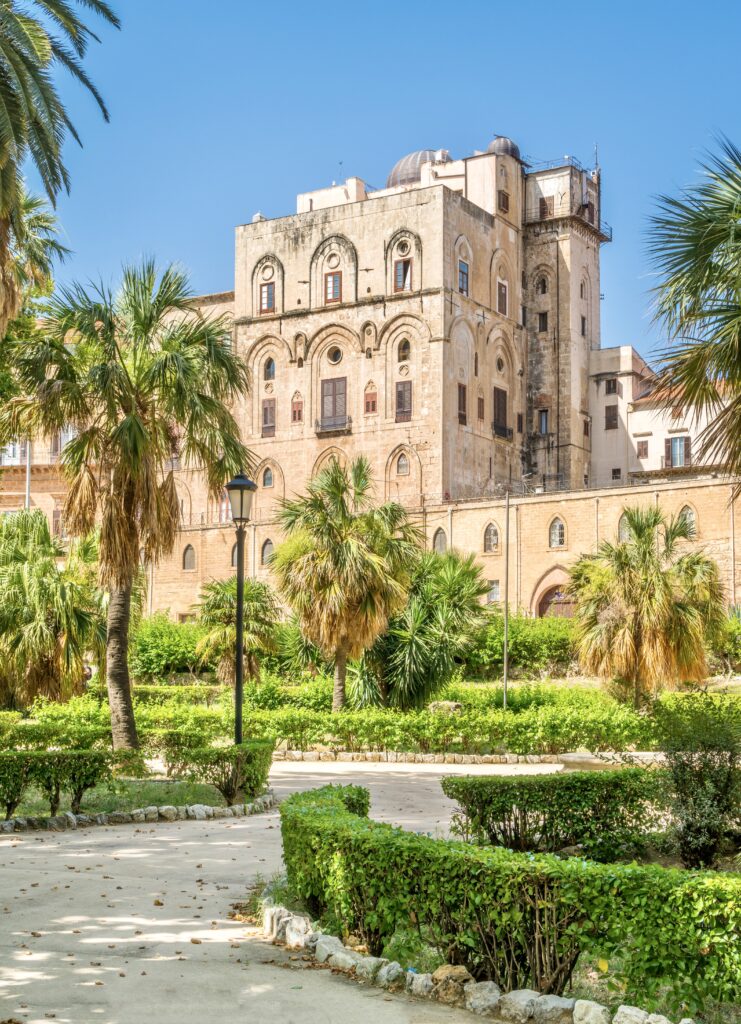
Tickets & Tours
I strongly suggest booking a skip the line ticket in advance on the palace website. Otherwise, even in the shoulder season, you may be standing in a long line in the hot sun. There’s no shade.
I’m not gonna lie, I thought the tickets were pricey at 19 euros. But the chapel is a can’t miss site in Palermo.
You may want to book a guided tour because there’s almost no signage and no audio guide.
I booked this 4 hour tour that included the palace, a private walking tour and a Sicilian lunch. It made the chapel come to life and I had a delicious street food lunch in Capo Market.
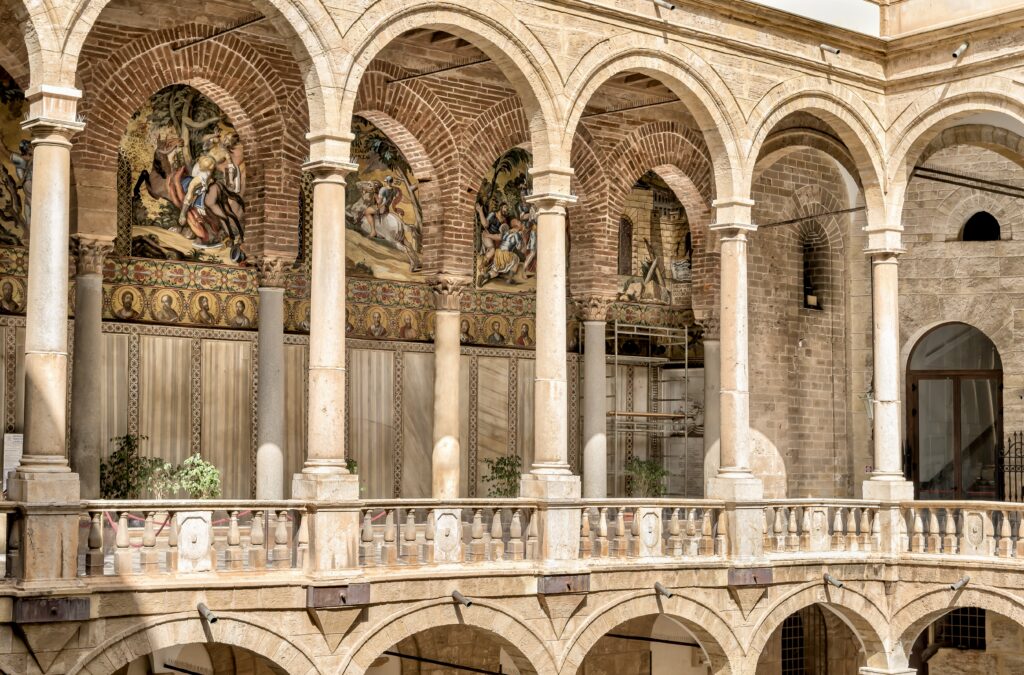
Guide To The Norman Palace & Palatine Chapel: What To See
In Palazzo dei Normanni, you can visit the Palatine Chapel, the royal apartments, the Norman towers, and the Maqueda Courtyard. To me, the highlights are the Palatine Chapel and the Sala di Ruggero (Hall of Roger).
Here’s what you can see on a visit (assuming the royal apartments are open), roughly in the order you’ll encounter them.
- Palatine Chapel
- Sala d’Ercole
- Sta dei Vicere
- Sala Pompeiana (Queen’s Room)
- Sala dei Venti (Torre Joaria)
- Sala di Rugggero
- Torre Pisana
- Landscapes room and picture gallery
- Sala Rossa
- Sala Gialla
- Punic-Roman walls
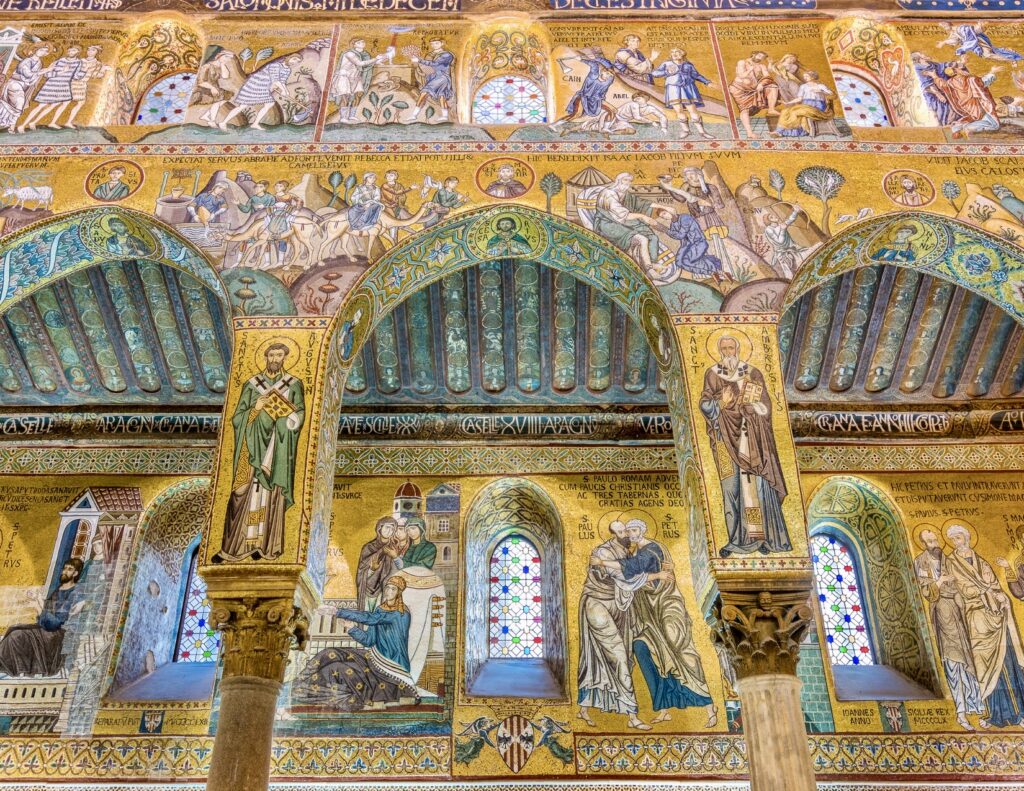
Palatine Chapel
A long entry way leads to the a graceful Renaissance courtyard, which is beautiful double porticoed space. From here, a staircase leads up to the UNESCO-listed Palatine Chapel, a picture of Oriental splendor.
Before you enter, take a look at the mosaics that decorate the outer walls. They were added later by the Aragonese and Bourbon kings.
The chapel is by no means small. It was intended for court ceremonies, not just intimate devotions. It has a central sanctuary in the east and a 3 aisled basilica hall.
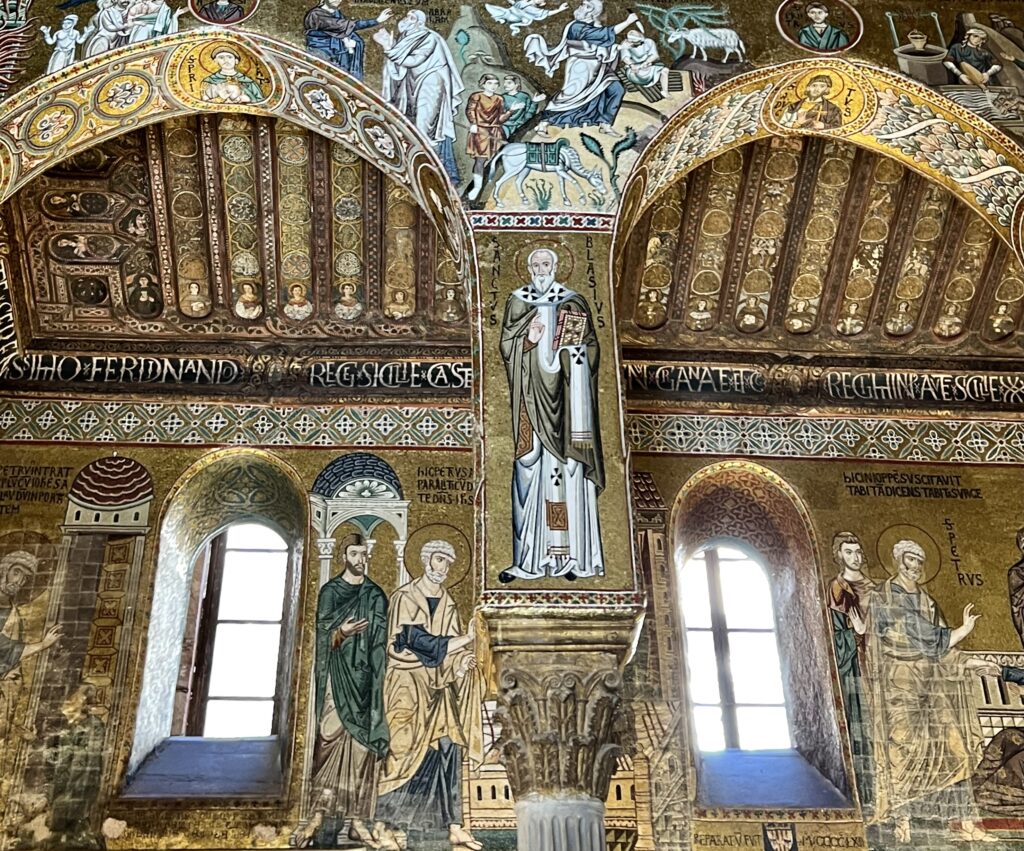
Roger’s glitzy chapel will blow you away. When you enter, you’ll feel like you’re in a golden cavern.
For some old school Roman cache, the king invited marble workers from southern Italy. They inlaid lavish marble on the floors and walls. A philosopher in Roger’s court described the floors as a “meadow of flower” in an “eternal spring.”
At the same time, Roger hired mosaicists from Constantinople to fill the walls with breathtaking Byzantine style mosaics.
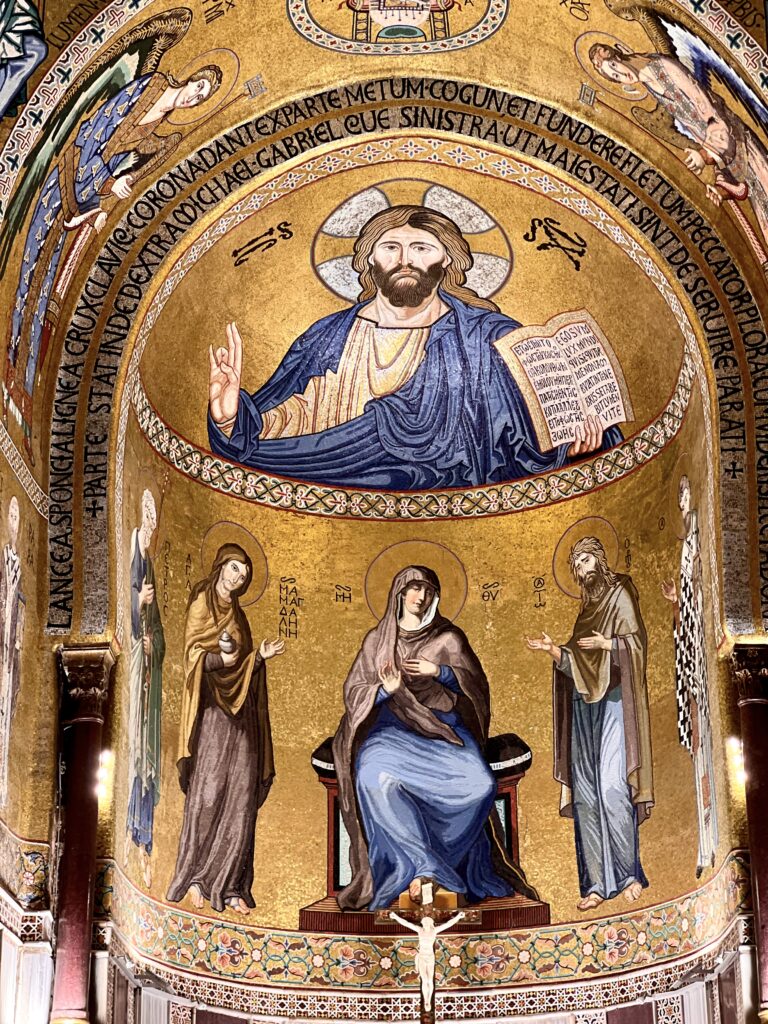
The mosaics are set against a gilded background and cover every inch of the interior. They are well lit and appear to have a lustrous quality.
Most of the mosaics tell stories from the Old Testament and Palermo’s role in the crusades. The ones on the side aisles focus on the lives of St. Peter and St. Paul.
The semi-dome of the central apse features the iconic image of the “all powerful” Pantocrator Christ, king of the universe. He’s the most impressive figure in the chapel and seated directly above the king’s throne platform.
Reflecting the diversity of Palermo’s populace, the christ has both blond and brown hair. He’s holding a bible and making the Byzantine-style blessing sign. Under him is the Virgin Mary enthroned between John the Baptist and Mary Magdalene.
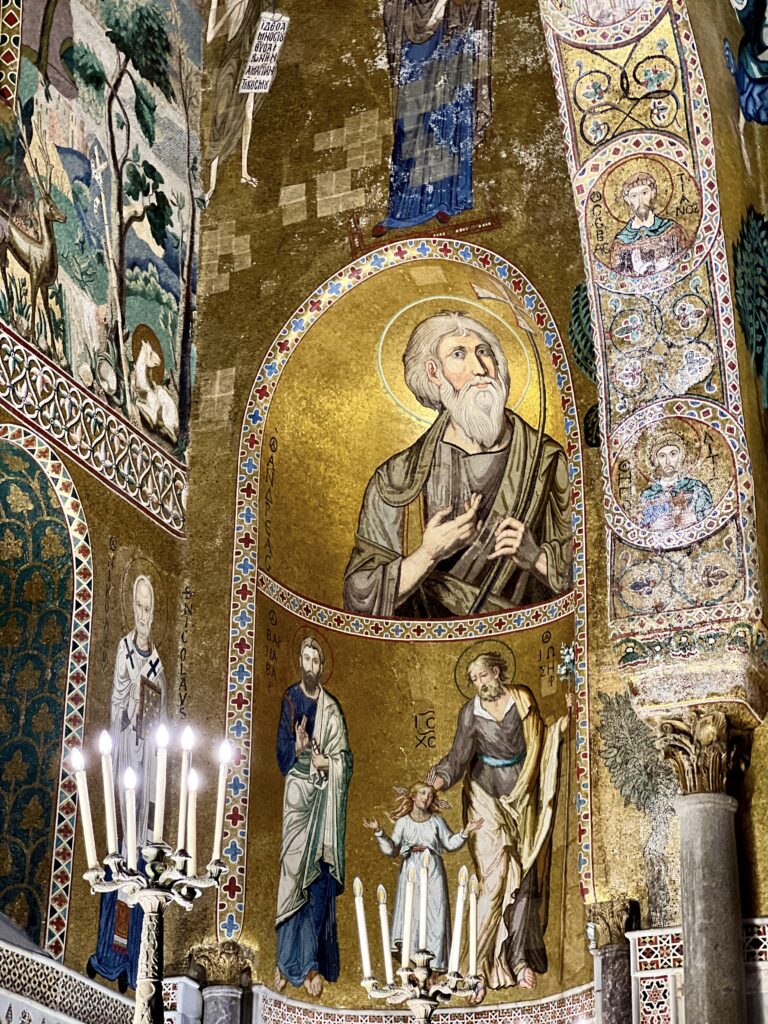
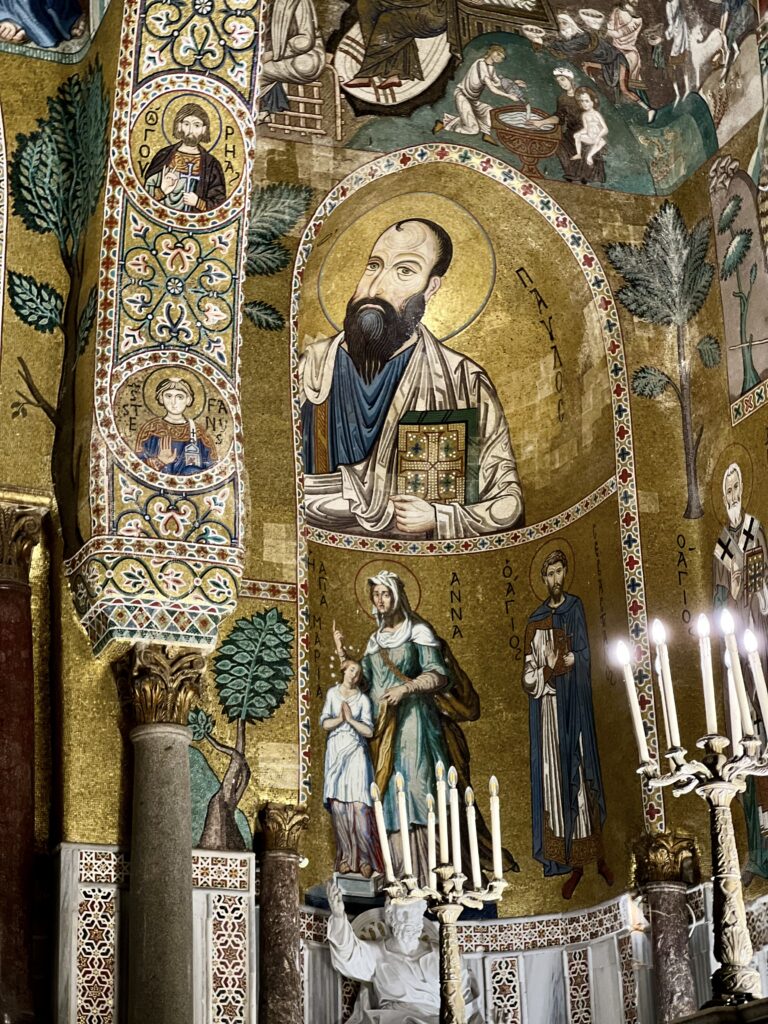
Pantocraters were a common theme with the Norman kings. You can see the same image in nearby Monreale Cathedral and Cefalu Cathedral.
The dome has another Christ Pantocrater. He’s in the center surrounded by four angels and four archangels, with their name written in Greek letters. They’re dressed in Byzantine costumes.
The 12th century muqarnas style ceiling is also stunning. Muqarnas is a decorative style where the ceiling appears to have stalactites, You can see two parallel rows of coffering in the form of 8 point stars.
The ceiling was most likely created and decorated by Fatimid Muslims from North Africa. It’s a rare instance where muslims painted human figures inside a church.
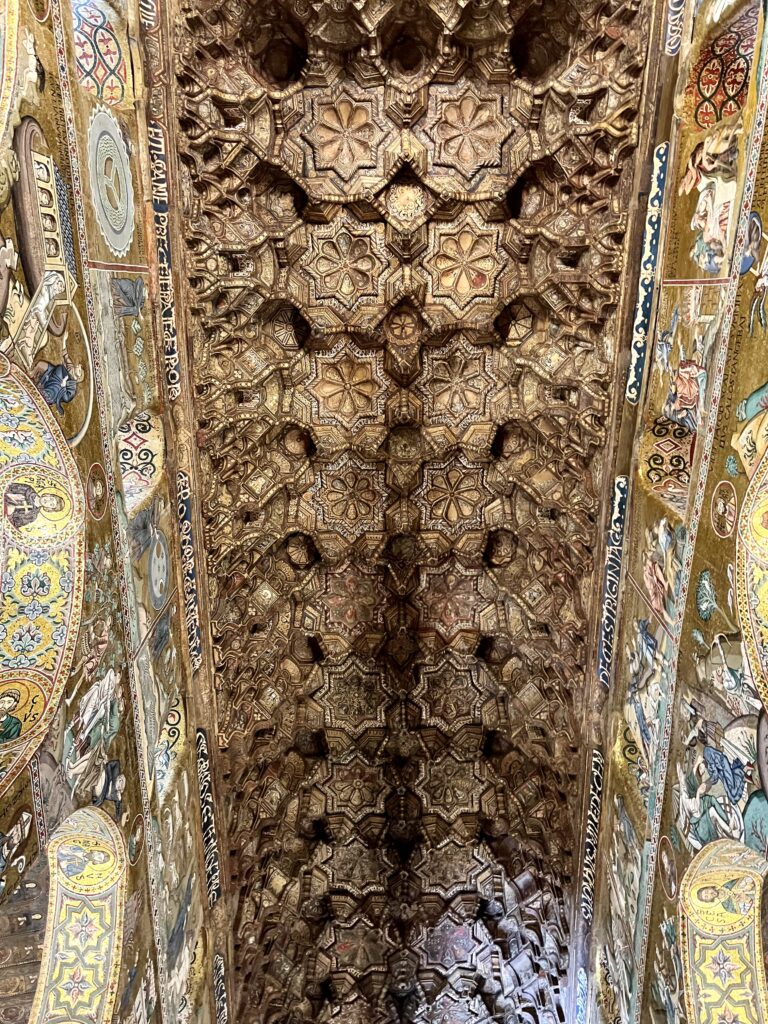
Royal Apartments
Sala d’Ercole
This room is dedicated to the myth of Hercules, who the Bourbon court admired and used as their symbol. The ceiling vault has 3 frescos, dating from 1813, including the Birth, Apotheosis, and Death of Hercules.
They were painted by Giuseppe Velasco. Hercules is in the center, portrayed as rather reflective. By completing the 12 labors, he’s conquered immortality. Panels in the corridor depict some of the labors.
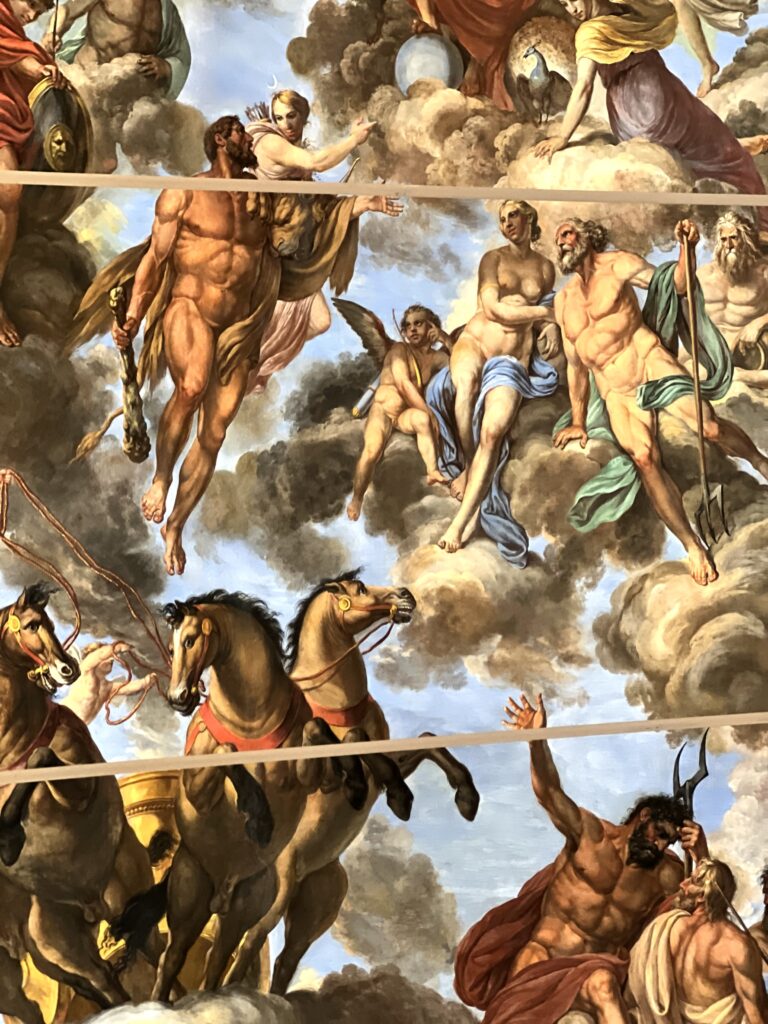
Sala dei Vicere
The Viceroy’s Room takes its name from the 21 portraits of viceroys and presidents painted by famous Sicilian painters in the late 18th and early 19th centuries.
The most famous one is by Gaetano Mangano depicting viceroy Domenico Caracciolo.
In the center of a room is a massive Murano glass chandelier from Venice with 36 lights. The vault has an elaborate carved frieze with playful putti.
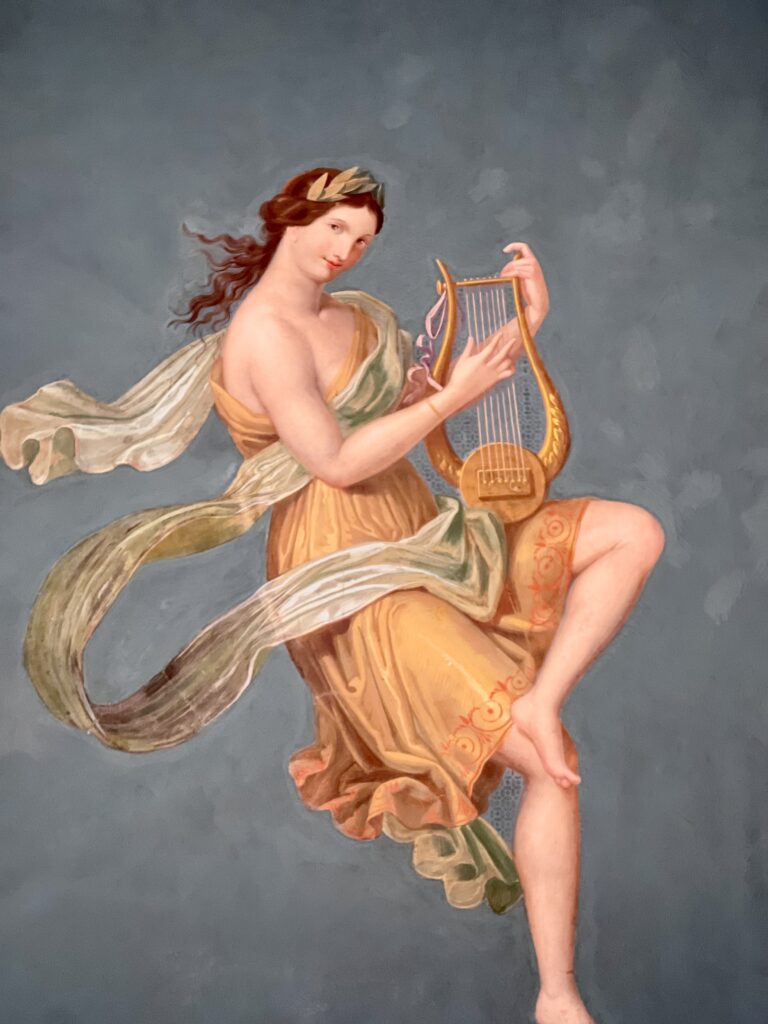
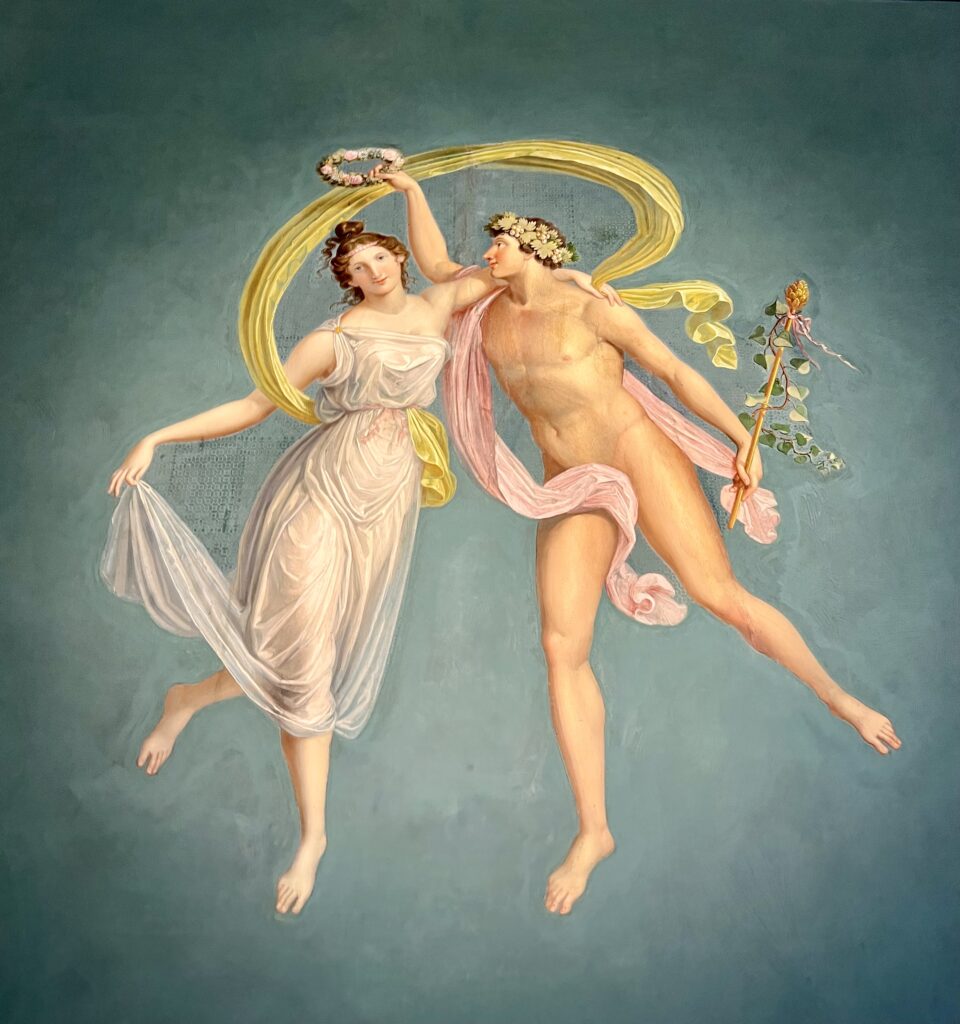
Sala Pompeiana
The Sala Pompeiana is such a pretty room. It’s decorated with Pompeiian style frescos from 1830, which are the work of Giuseppe Patania. The theme is the triumph of Venus and Eros. A frieze of playful cupids runs along the ceiling.
It’s thought that the room was for the private use of the court. It’s connected to the Reading Room and the Chinese Room.
The Reading Room is decorated with more Pompeiian style figures and grotesque frescos. The Chinese Room, in contrast, was inspired by the vogue of Orientalism in the mid 18th and early 19th centuries.
On one wall is a mock perspective balcony where wealthy men and women look out onto a faux naturalistic background.
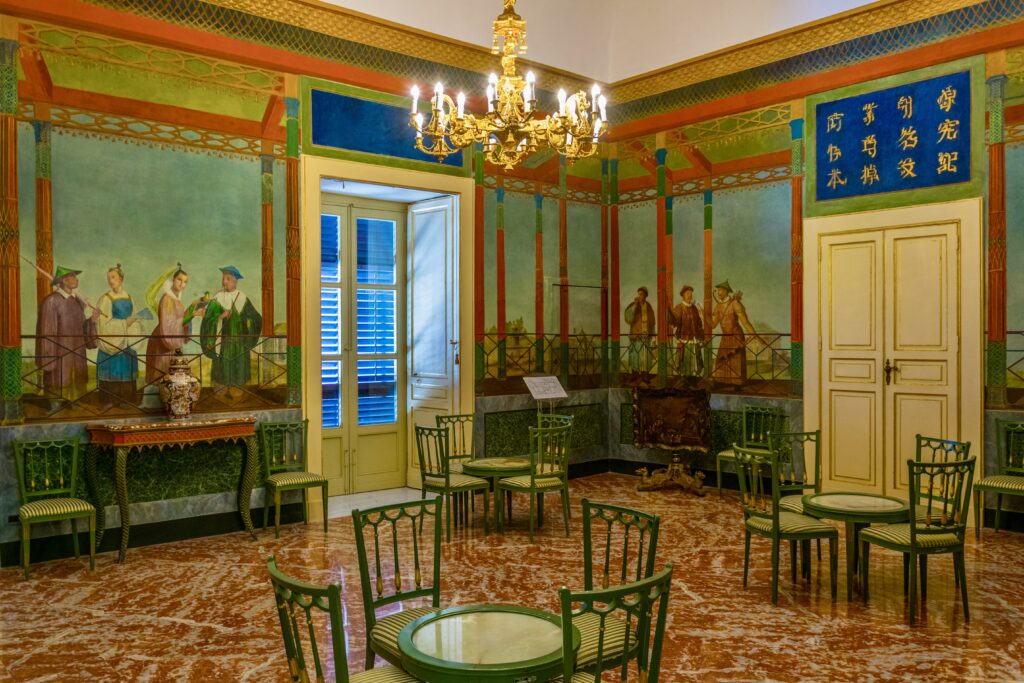
Sala dei Venti (Torre Joaria)
The Torre Joanna evokes another era entirely.
This is the ancient Arab part of the castle. The tower was once one of the four towers used to defend the Arab-Norman nucleus of the palace.
It’s a squarish room. Four gray marble arches support ogival columns. There’s a mosaic frieze above the arches. And it was likely heavily decorated with gems and gold.
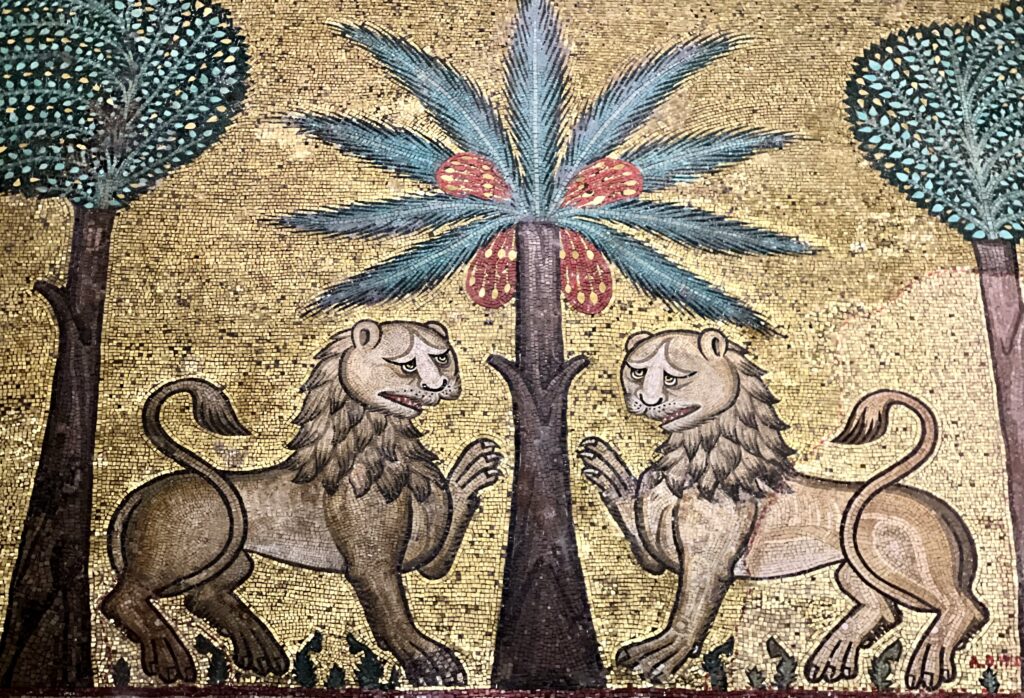
Sala di Ruggero
The tower leads to the Sala di Ruggero, or Roger’s Room. It’s the most beautiful and striking room in the royal apartments. It’s in one of the oldest parts of the palace and looks like an Arabian dream.
The room is decorated with golden tesserae mosaics depicting an enchanted garden. You can spot exotic animals of Persian design — peacocks, lions, centaurs, winged lions, and griffins.
They have no didactic purpose like the mosaics in the Palatine Chapel or Monreale Cathedral. No, these mosaics have a more hedonistic intent.
They also celebrate King Roger II and you can see his heraldic symbol, two lions facing each other with a palm tree between them.
The room was used as a ceremonial space, probably intended for the king’s private audiences.
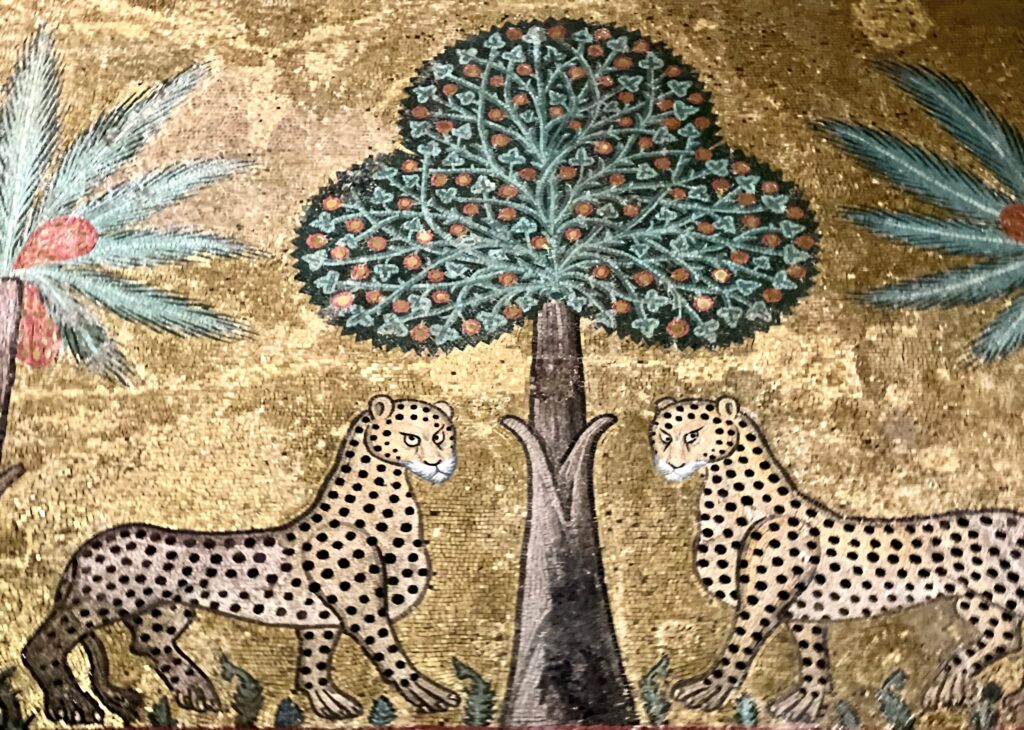
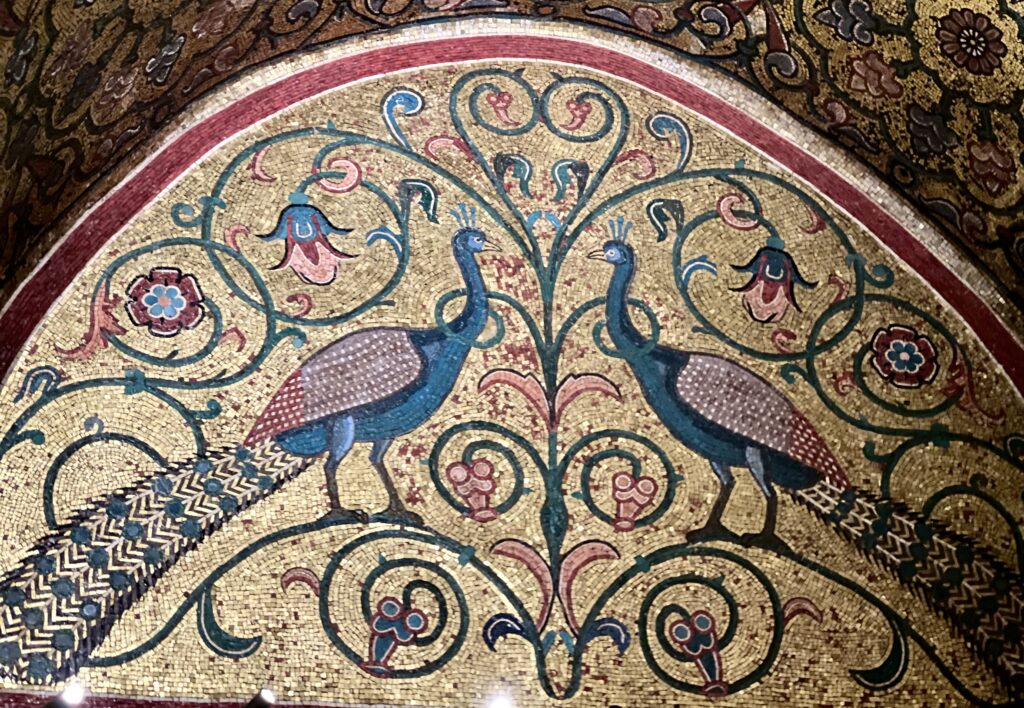
Torre Pisana
The Torre Pisano is the only medieval tower to survive the centuries of palace reconfigurations. The tower is large and likely served as the donjon of the medieval keep and perhaps the throne room.
The walls were likely decorated with mosaics glorifying the Norman kings. You can only see fragments of them today.
The tower is roughly 60 square feet and has 2 rectangular turrets to the west. It was built using tufa ashlar, while the vaulted central room is surrounded by an ambulatory with an ogival vault.
The exterior facade of the tower has ogival arches and blind arcades that are typically Arabic.
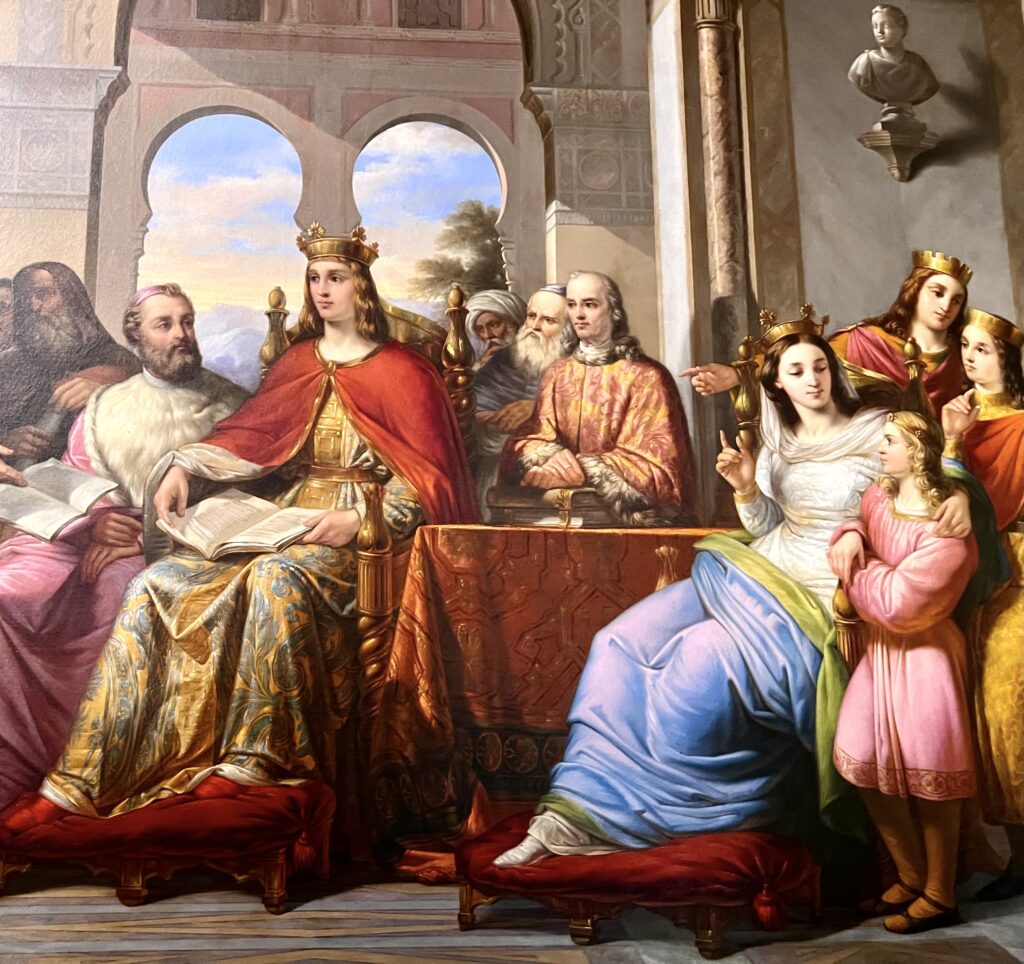
Landscapes Room and Picture Gallery
The Sicilian landscape room houses some masterpieces of Sicilian landscape painting. There’s a couple to look for.
The Battaglia di Dogali is a monument piece by Roman painter Cesare Bisho. Another large painting is one of Federico II, the wonder of the world, and his family.
My favorite painting was The Negation of St. Peter by Filippo Paladini. It’s a Baroque piece with Caravaggio-esque chiarascuo (dark, light effects).
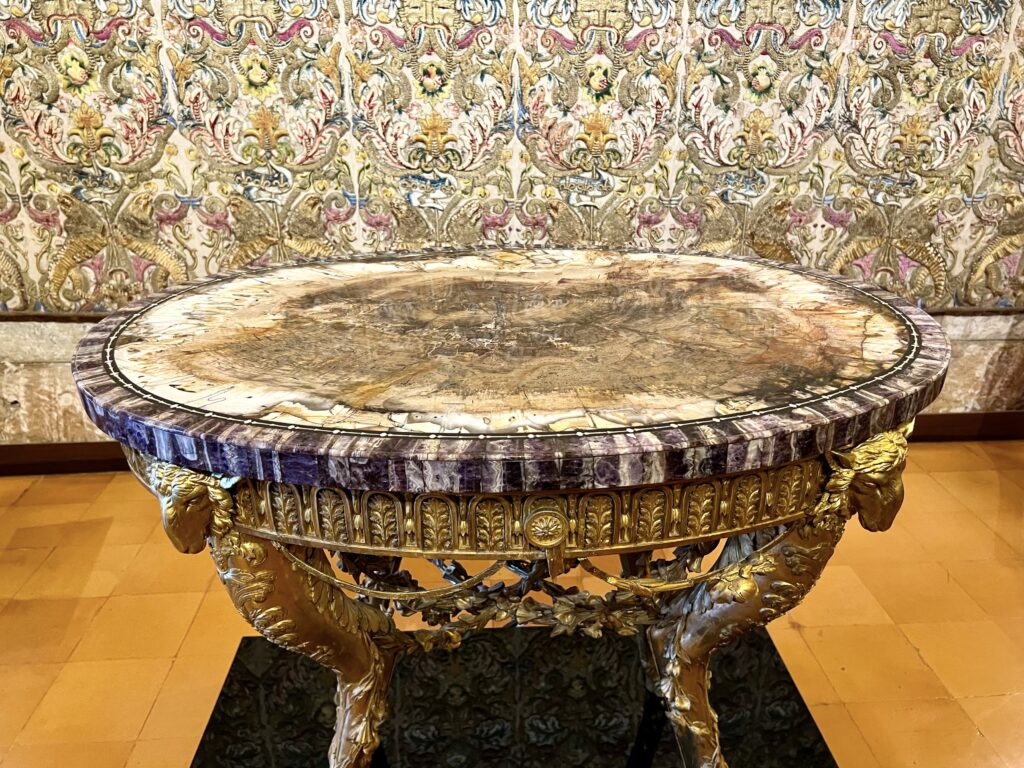
Sala Rossa, Sala Gialla & Sala Verde
The three galleries were built by the Spanish Bourbons in the 18th century. They take their names from the colors of the sumptuous wall tapestries — the red, yellow, and green rooms.
The Sala Rossa, also decorated with frescos, served as the throne room. The Sala Gialla has three monumental paintings by Giovanni Patricollo.
Punic-Roman walls
In 1984, archaeologists discovered some of Palermo’s ancient Roman walls and city gates dating from the 3rd to 5th centuries.
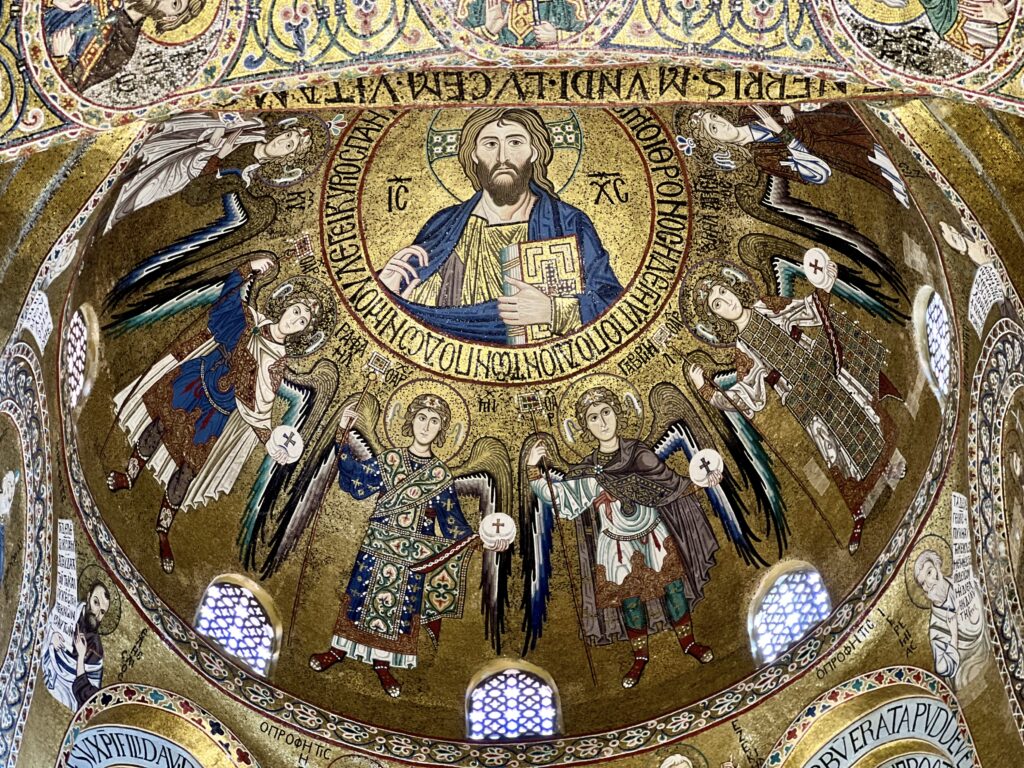
Tips For Visiting The Palatine Chapel
Tickets & Tours
You can buy tickets at the the ticket office in front of the palace. But I strongly suggest booking a skip the line ticket in advance on the palace website. You may also want to book a guided tour because there’s almost no signage and no audio guide.
Opening Hours
The opening hours of the Palatine Chapel are:
| Friday | 8:30 am – 4:30 pm |
| Saturday | 8:30am – 4:30pm |
| Sunday | 8:30–9:30 am & 11:30 am –12:30 pm |
| Monday | 8:30 am – 4:30 pm |
| Tuesday | 8:30 am – 4:30 pm |
| Wednesday | 8:30 am – 4:30 pm |
The royal apartments can only be visited from Friday through Monday. You’ll pay the same price if they’re closed. So, plan to visit on a day they’re open or you may feel like you got ripped off.
Note, sometimes weddings are held in the chapel and it may close a bit earlier.
Dress Code
You need to dress appropriately to enter. Of course, this burden falls completely on women. You cannot wear sleeveless tops or dresses, short shorts or a short skirt.
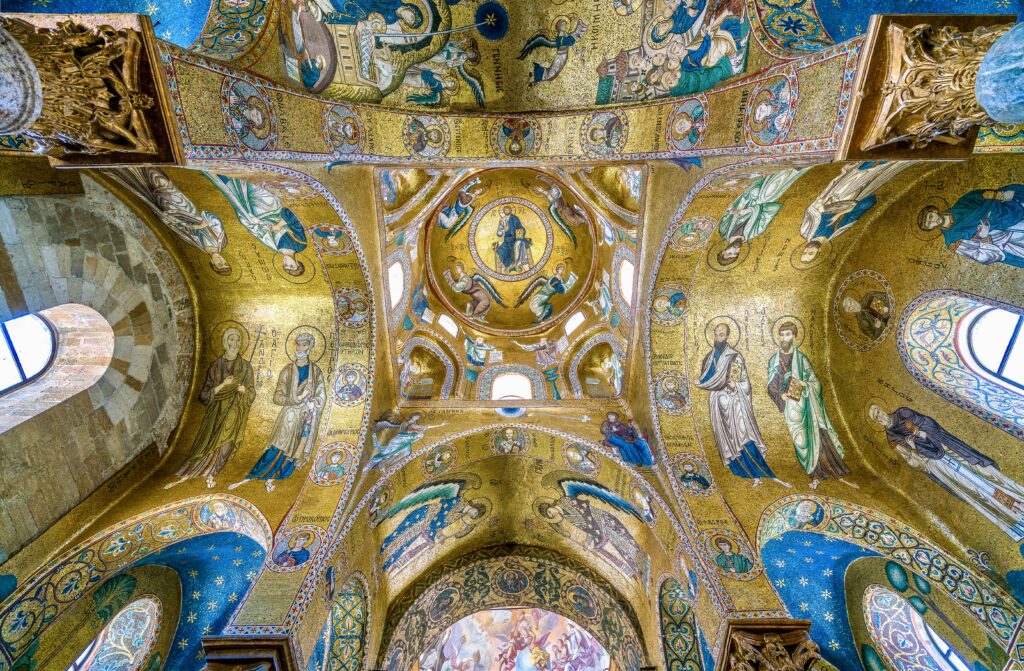
More Mosaics?
If you want to see more mosaics while you’re in Palermo, you can head to the Church of La Martorana in Piazza Bellini and Monreale Cathedral in nearby Monreale. These two sites are also part of Palermo’s Arab-Norman UNESCO designation.
La Martorana is a golden treasure also known by its official name, the Church of Santa Maria dell’Ammiraglio. It has a continuous cycle of jewel-like mosaics created by Greek artists in the 12th century. The mosaics are even older than the mosaics in the Palatine Chapel.
Monreale Cathedral is the world’s most famous Norman cathedral and Sicily’s most beautiful church. Like the Palatine Chapel, it’s slathered from floor to ceiling with glittering 12th century Byzantine mosaics. For the full scoop, you can read my guide to Monreale Cathedral.
I hope you’ve enjoyed my guide to Palermo’s Norman Palace and Palatine Chapel. You may enjoy these other Sicily guides:
- 2 days in Palermo itinerary
- 2 days in Syracuse itinerary
- 2 days in Trapani itinerary
- 1 day in Catania itinerary
- 1 day in Taormina itinerary
- Guide to the Valley of the Temples
- Guide to Villa Romana del Casale
If you need a guide to the Norman Palace and Palatine Chapel, pin it for later.
